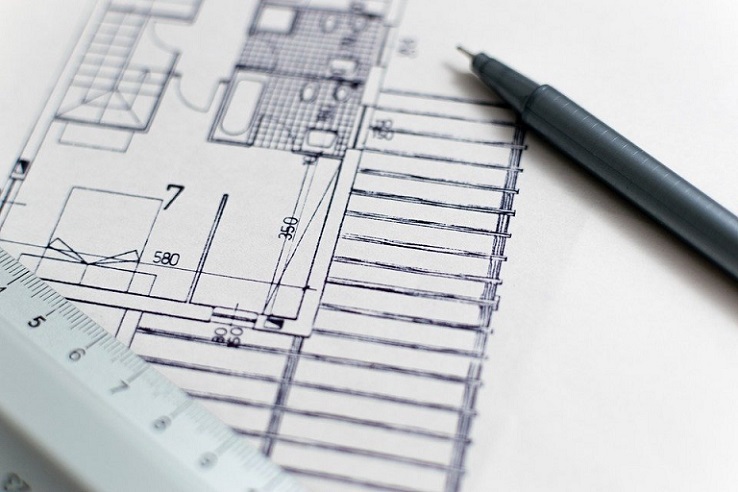
You've chosen the perfect location for your new dental practice. Now, it's time to set up your equipment, design your waiting room, and make sure that the reception area is suitable for your patients. The design of your practice is important for a number of reasons. You'll likely end up working within this design for a long time--after all, moving things around is a serious time investment, and when you're done seeing patients for the day, you and your staff will be ready to go home! You want a design that is functional and welcoming, taking into account both the needs of your staff and the needs of your patients.
When you start on the design of your startup, make sure you're familiar with the most important elements of your office design. You'll want to make sure that you focus on the key items of import during these early stages, when your budget is tight, and you want to be sure that you won't overspend. At the same time, you want to make sure your office has everything that it needs for you to give the best possible value to your patients. Your breakdown should include:
At this stage, when you're first opening your own practice, it's important to consider your future plans for your office. Are you planning to work alone in your new practice, or are you going to work alongside other dentists? What types of services do you plan to offer? Think through each aspect of your plans for the future. For example:
If you're planning to work with other dentists or have dual doctors, you're going to need more space than if you were going into practice alone. This includes a larger number of patient care rooms as well as extra room in your reception area for patients who are waiting.
If your plans include specific specialties, you'll need to divide your space accordingly. For example, orthodontics might take place in a different part of your facility than the area where you take care of redo patients.
Elderly patients may need more accommodations than younger patients. While you'll need to make sure that your office is compliant with ADA requirements (the Americans with Disabilities Act states that disabled patients must have equal access to your office), you'll need to prepare more fully for this if you intend to work primarily with elderly patients or those with disabilities.
Leave room for caregivers. This is particularly important if you intend to go into pediatric dentistry or to work with the elderly, both of whom may need to bring helpers with them.
You've already chosen a dental practice location that you believe will fit your needs. Now, it's time to take a look at your space. How does it fit within your dreams and plans? What adaptations do you need to make--either to the office or to your plans--in order to fit with your eventual goals? Ask yourself questions like:
Many patients are highly uncomfortable when the time comes to visit the dentist. They may put off visits for as long as possible or find themselves struggling to calm down once the time comes to go back to the office. There are several strategies that can help you prioritize patient comfort and make your office more welcoming.
Consider how your office design lends itself to privacy. Make sure that patients who are recovering from surgery or other potentially traumatic procedures have space to themselves, where they can be relatively confident that other patients can neither see nor hear them. This can also help maintain patient confidentiality.
Bring in natural light. Where possible, take advantage of natural light. Open up the blinds, place patients across from windows, and let them soak in the advantages of sunlight to help keep them calm during their stay.
Use soothing colors and artwork geared toward relaxation. Many medical and dental practices are embracing color in their designs--with good reason. Soothing colors can help calm your patients and help them feel more at ease in the office. Select your artwork with the same intent: while it's okay to show some personality (after all, this is your office; you can make it look like you!), it should be geared toward relaxing your patients.
Consider the interests of your patients. Generic, traditional artwork might appeal more to seniors, while a pediatric practice might choose to highlight superheroes, animals, or familiar characters in an effort to put kids at ease.
Allow for privacy in the waiting area. Make sure that friends and family have room to interact with one another while still allowing patients to maintain some separation. It's always better to have a few too many seating options in your waiting area than it is to have too few places for people to sit, leaving them crammed in and cramped.
Your patients' needs are important, but you also need to be sure that you and your staff will be comfortable as you move around your practice. Consider such important elements as:
Designing your own dental practice for the first time is a heady feeling. This is your chance to do things the way you want to do them, rather than being stuck with a practice designed by someone else. Carefully examining all of the important elements of your practice will make it easier to create a design that you'll love.
Frequently Asked Questions
Q: Why is the design of a dental practice important?
A: The design impacts both staff productivity and patient experience, making it crucial for creating a functional and welcoming environment. A well-designed practice can contribute to a positive atmosphere, improve patient satisfaction, and enhance operational efficiency.
Q: What are the key steps in designing a dental practice?
A:
At Dental & Medical Counsel, we've been instrumental in realizing the practice goals of countless dentists. Whether you're looking to purchase, launch, or sell a dental practice, our expertise is your guide. Beyond the initial stages, we're committed to ensuring your dental practice remains legally compliant.
We provide comprehensive support, including employment law protections, dental contract reviews, and assistance with dental employment agreements. Additionally, we specialize in incorporating dental practices and securing trademarks. And for long-term planning, our services extend to helping dentists with succession and estate planning. Trust us to be your partner in every step of your dental practice journey.
.jpg?width=300&height=396&name=Ali%20Website%201_edited%20(1).jpg)
About Ali Oromchian, Esq.
Your Dental Lawyer
Ali Oromchian, JD, LL.M., is a leading legal authority in dental law and the founding attorney of Dental & Medical Counsel, PC, with over two decades of experience. His deep connection to dentistry comes from his wife's nearly two-decade-long career as a pediatric dentist.
This personal insight fuels his dedication to empowering dentists to navigate their legal challenges and achieve their practice goals. In doing so, Ali has helped thousands of doctors open their practices while maintaining legal compliance.
Ali is frequently quoted and contributes articles to dental publications, including the California Dental Society, Progressive Dentist, Progressive Orthodontists, Dentistry Today, Dentaltown, and The New Dentist magazines, further showcasing his commitment to the dental community.

Stay updated with industry news!
1904 Olympic Blvd, Suite 240
Walnut Creek, CA 94596
Phone: 925-999-8200
Fax: 925-884-1725
frontdesk@dmcounsel.com
| Monday | 8:00AM - 6:00PM |
| Tuesday | 8:00AM - 6:00PM |
| Wednesday | 8:00AM - 6:00PM |
| Thursday | 8:00AM - 6:00PM |
| Friday | 8:00AM - 6:00PM |
| Saturday | Closed |
| Sunday | Closed |